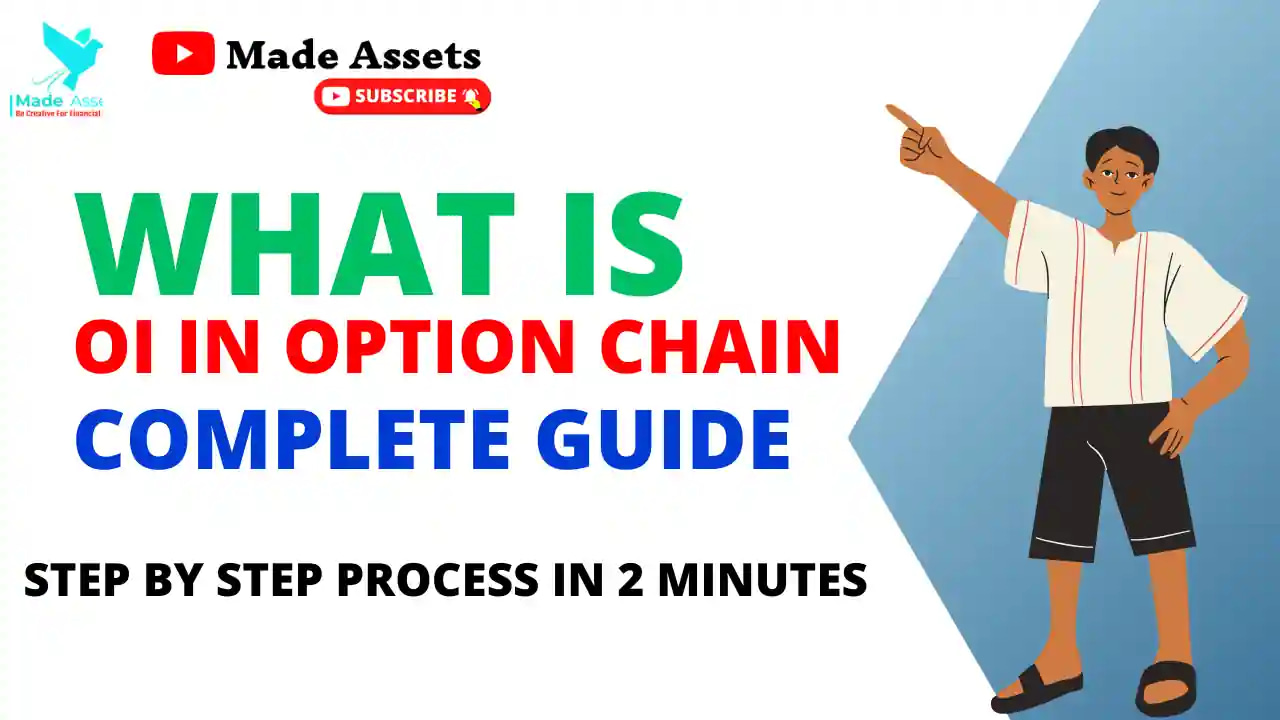What Is OI In Option Chain: A Comprehensive Guide In 2023
What is OI in Option Chain: In the world of finance and investment, option trading offers a range of opportunities for investors to manage risk and maximize returns.
However, navigating the complexities of option trading requires a solid understanding of various terms and metrics. One such essential metric is “OI” or Open Interest in the option chain. In this article, we will delve into the concept of OI and its significance in option trading.
What are Options?
Before we delve into OI in the option chain, let’s briefly understand what options are. Options are financial derivatives that provide the buyer with the right, but not the obligation, to buy or sell an underlying asset at a predetermined price (strike price) within a specified time frame.
They are popular among traders for their potential to generate profits and hedge against market risks.
Understanding Option Chain
The option chain is a table that lists all available options for a particular underlying asset, such as stocks or commodities. It provides crucial information like strike prices, expiration dates, and option type (call or put) for various options.
Introducing Open Interest (OI)
Open Interest (OI) is a critical metric displayed in the option chain. It represents the total number of outstanding or open contracts for a specific option. Each option contract involves two parties, a buyer, and a seller. When a new contract is created by either buying or selling an option, it adds to the OI.

How is OI Calculated?
The calculation of Open Interest is relatively straightforward. For a specific option, if a trader buys five option contracts and another trader sells five contracts, the total OI for that option is ten contracts. As long as these contracts remain open, the OI will be ten.
Interpreting OI in Option Chain
OI provides valuable insights into the market sentiment for a particular option. High OI suggests high market interest, indicating that traders have strong opinions about the future price direction of the underlying asset.
OI and Market Sentiment
When OI for call options significantly outweighs OI for put options, it suggests bullish sentiment in the market. Conversely, a higher OI for put options indicates bearish sentiment.
OI and Liquidity
Higher OI typically results in increased liquidity for that option. Options with higher liquidity are easier to buy or sell at desired prices, making them attractive to traders.
OI and Price Movements
OI, in conjunction with price movements, can offer valuable insights. A rising OI alongside an increase in the underlying asset’s price may indicate a strong bullish trend.
Factors Influencing OI
Several factors influence OI, including market news, earnings announcements, geopolitical events, and changes in interest rates.
OI vs. Volume
OI should not be confused with trading volume. While both are crucial metrics, volume represents the number of contracts traded during a specific period, whereas OI represents the total number of open contracts.
OI and Option Expiry
As an option nears its expiration date, traders may choose to close their positions or roll them over to a different contract. This can affect the OI for that option.
Using OI for Trading Decisions
Traders often use OI as part of their decision-making process. High OI and increasing prices could signal a favorable trading opportunity.
Risks Associated with OI
While OI can provide valuable insights, it’s essential to remember that it’s just one of many indicators. Relying solely on OI for trading decisions may lead to undesirable outcomes.
Common Misconceptions about OI
There are some misconceptions about OI, such as assuming higher OI always results in profitable trades. It’s crucial to interpret OI in conjunction with other factors.
Conclusion
Open Interest (OI) is a vital metric in the option chain that reflects market sentiment and liquidity. As an investor or trader, understanding OI can provide valuable clues for making informed trading decisions. However, it’s essential to use OI in conjunction with other indicators to ensure a well-rounded approach to option trading.
Frequently Asked Question
Q.1 Can OI alone predict market movements?
A.1 While OI provides insights, it should not be solely relied upon to predict market movements. Combine it with other indicators for better accuracy.
Q.2 What happens to OI after option expiry?
A.2 After option expiry, the OI for that particular option becomes zero, as all contracts are settled.
Q.3 Is higher OI always better for trading?
A.3 Not necessarily. Higher OI indicates market interest, but other factors like volatility and underlying asset analysis are equally important.
Q.4 How frequently is OI updated?
A.4 OI is updated Daily at the end of each trading day.
Q.5 Does OI differ for call and put options?
A.5 Yes, OI is calculated separately for call and put options, representing the number of outstanding contracts for each type.

